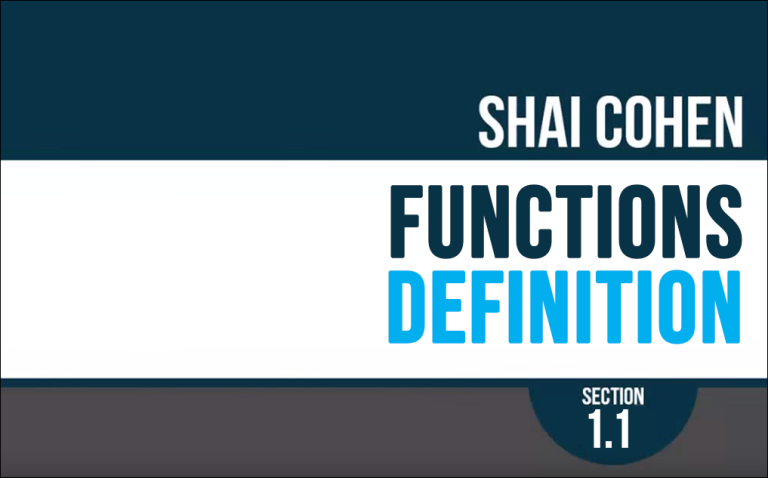- Definitions of functions and related terms
- Inverse functions and logarithms
- Trigonometry (with inverse trig)
Calculus for Engineers I
Project Description
Project Components
Unit 2: 2.1 to 2.3: Limits Series
We now begin calculus itself. In this unit, we look at limits and try to figure out what they are and how to calculate them.
Unit 3 – Sections 2.4 to 2.6
We conclude our study of limits – at least for now. With this unit’s material, we expand the uses for limits and our understanding of how they work.
Unit 4 – Sections 3.1 to 3.3
We introduce the derivative as the limit of the slope of secant lines. This will be one of the most important practical and theoretical tools available to you as an engineer.
Unit 5 – Sections 3.4, 3.5
This unit is pretty short in terms of videos to watch, but there is a lot of work to do. Section 3.4 introduces trigonometric derivatives and the limits required to do them. Section 3.5 begins the application of calculus to physical problems. We include example videos showing how CIV 100 questions can be combined with derivatives to create interesting results. Do make sure to get plenty of practice with the exercises in 3.5.
Unit 6 – Sections 3.6, 3.7, 3.10
This is a highly focused unit – nothing but the Chain Rule and some of its applications. We delve much more deeply into applications of our material to other courses in the examples (with even more examples to come in the following units). If you are comfortable with the Chain Rule, but apply it without using the Leibniz notation, make sure to watch the videos. There are a number of applications where the d/dx notation becomes necessary.
Unit 7 – Sections 3.8, 3.9, 4.1, 4.2
There is quite a bit of material in this unit, starting with a couple of new applications of the Chain Rule and then beginning to study what derivatives actually tell us about functions. This latter part, the beginning of Chapter 4, will allow us to graph functions, optimize them (that is, find maximum and minimum points), and even set up the concept of integration.
Unit 8 – Sections 4.2 to 4.4
There is some vital stuff in this unit. Section 4.3, on graphing functions, ties together every single topic we have looked at so far, other than word problems. A good graphing question involves arithmetic, limits, first and second derivatives, and combinations of these, together with the actual graphing. Section 4.4 deals with optimization and gives us the word problems that are not there in the previous section.
Unit 9 – Sections 4.5 to 4.8
A lot of videos in this unit, but three of the four sections have very little in terms of testable material. Only L’Hopital’s Rule requires a lot of practice. We are, however, setting the groundwork for some important mathematics. In these sections, we are introducing the idea of numerical methods, setting the stage for integration, and taking the first step toward Taylor series.
Unit 10 – Sections 4.9, 5.1, 5.2
With this unit, we move from derivatives to integrals. We approach these in two different ways: first, we look at what it means to take the inverse of a derivative, and then we try to look at the question of the area under a graph.
Unit 11 – Sections 5.3 to 5.5
With this unit, we learn about the Fundamental Theorem of Calculus. The great result of the field, it lets us see that integrals and derivatives are (as far as possible) inverse operations. This is a grand result and deserves our careful attention. We also cover the method of substitution, which is the most-used of the ways in which we do integrals (other than, for some people, Wolfram Alpha).
Units 12 and 13 – Sections 6.1 to 6.5
The remaining lectures in this course give us the framework for applying integration to the real world. Everything that we do here shows up time and again in engineering – Integrals as Net Change allow us to find the total of a changing value; Volumes of Rotation let us find the capacity of conduits and volumes of columns; Arclength lets us look at functions as a part of a building diagram with the knowledge that we can still figure out how much material is needed for construction.

Project Details
Completed
Copyright/Usage License:
![]() This work is licensed under a Creative Commons Attribution License
This work is licensed under a Creative Commons Attribution License
Funding Information:
This project was funded by the Shared Online Course Fund through Ontario Online, Ministry of Training, Colleges and Universities.
